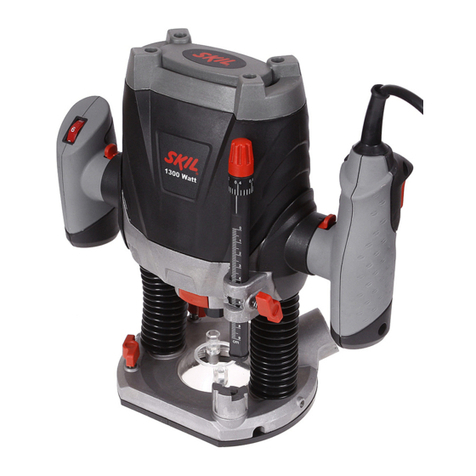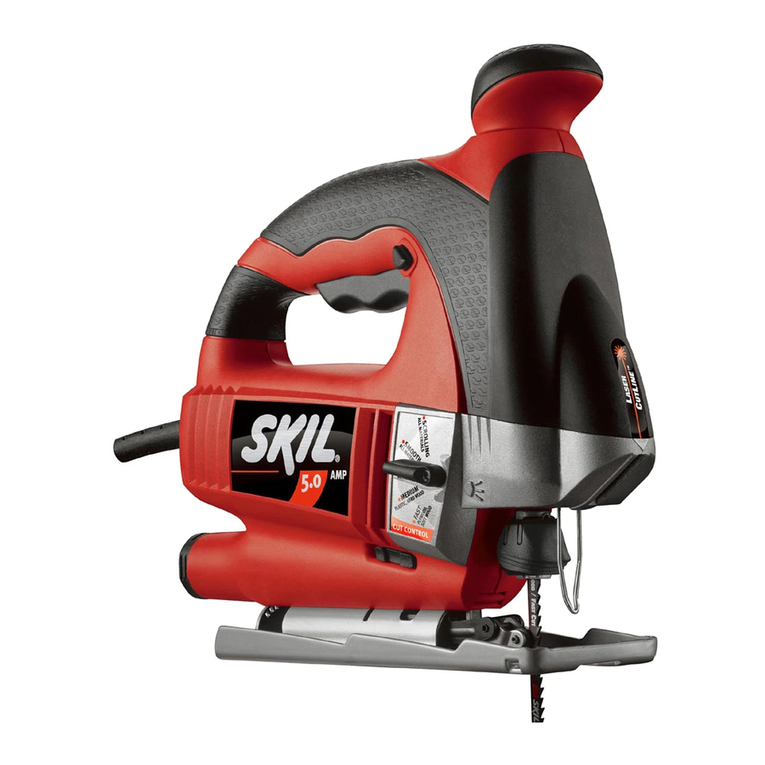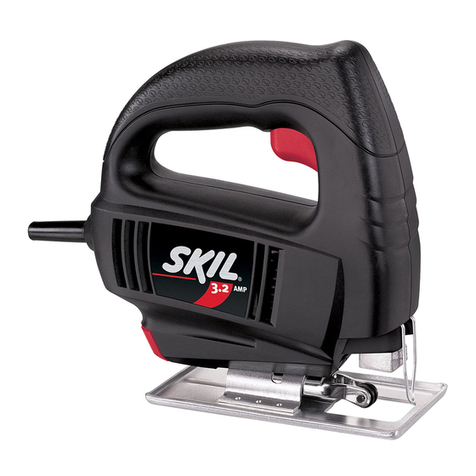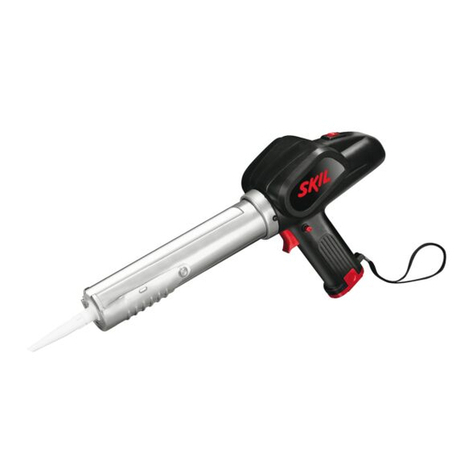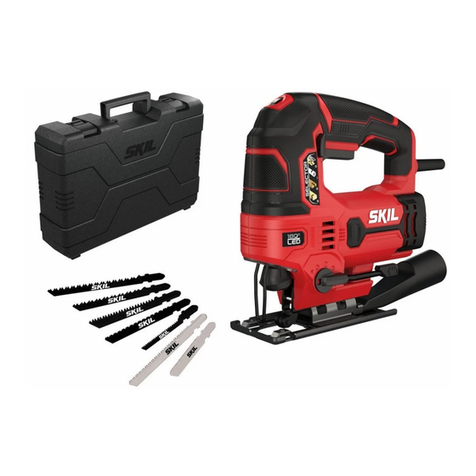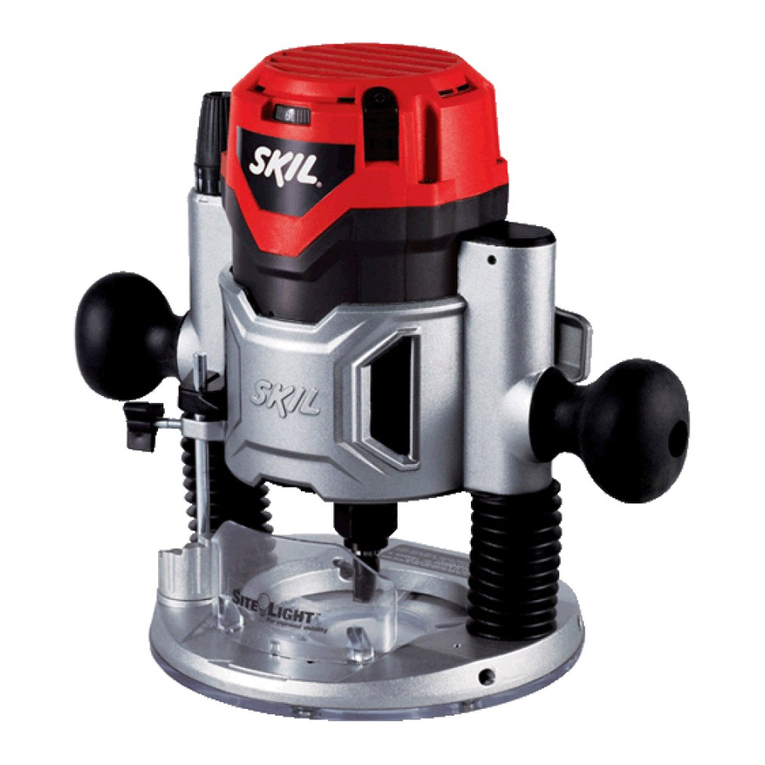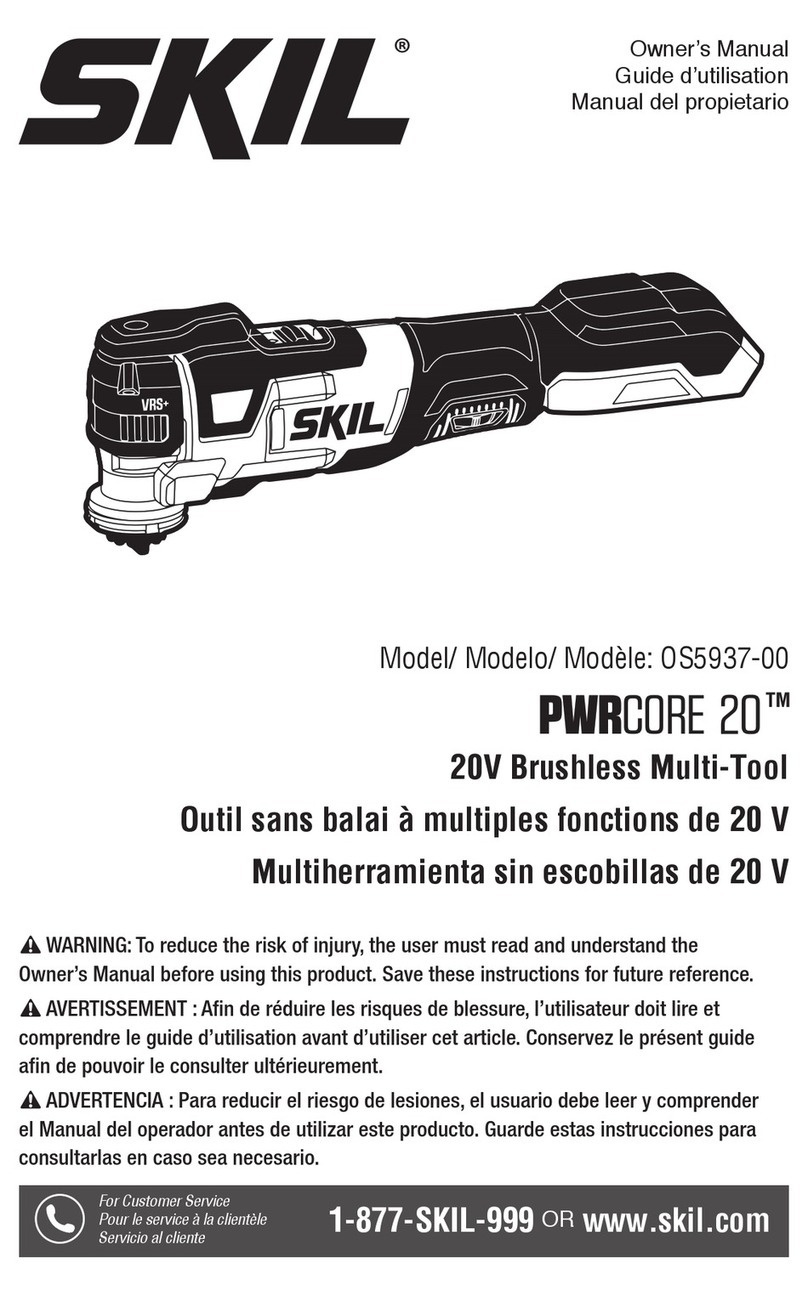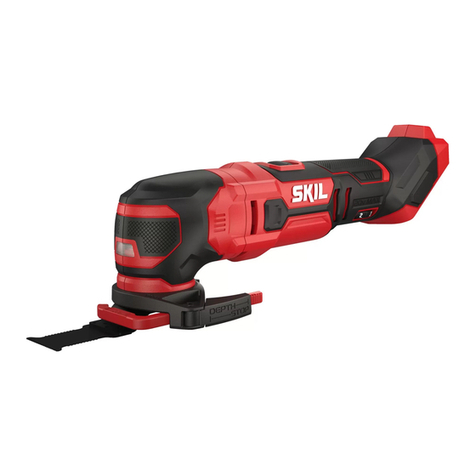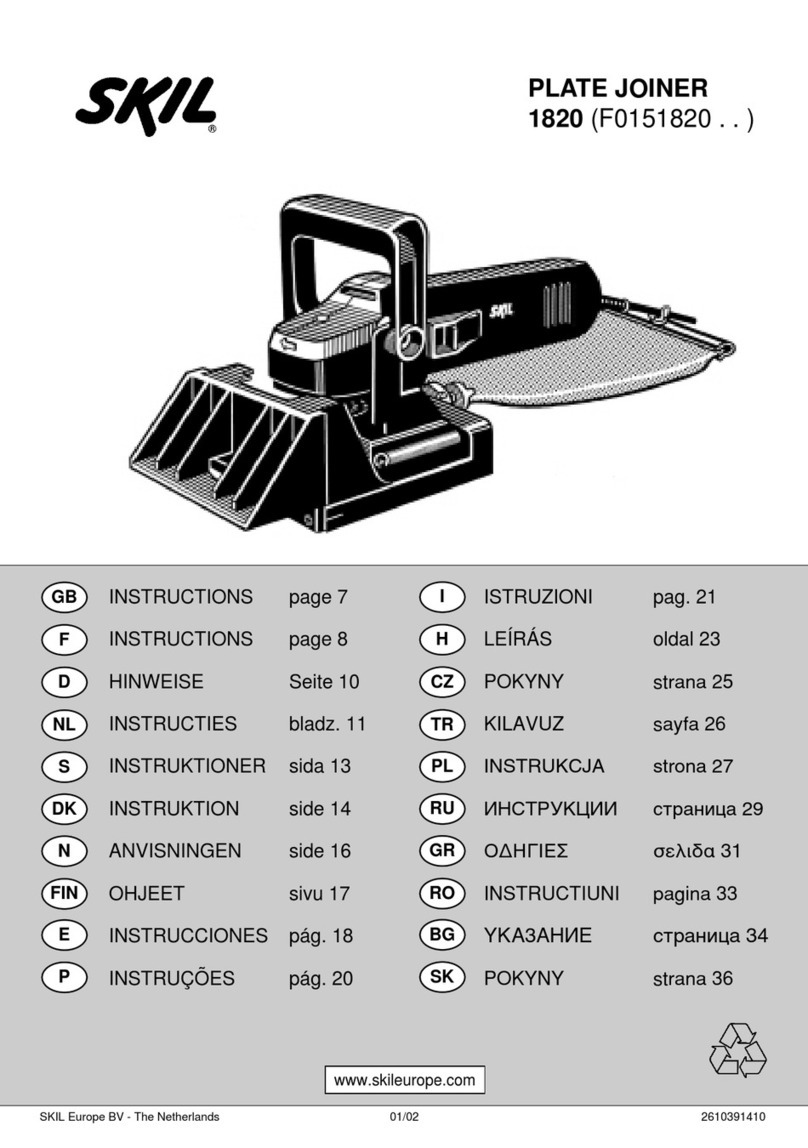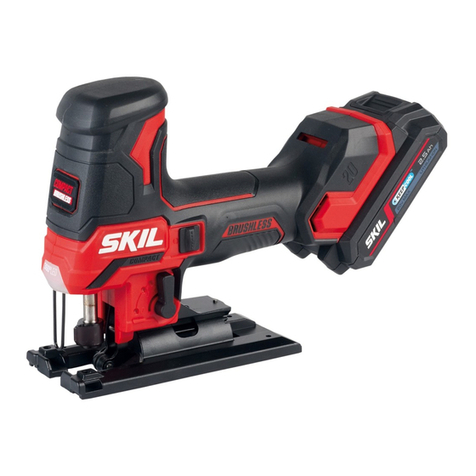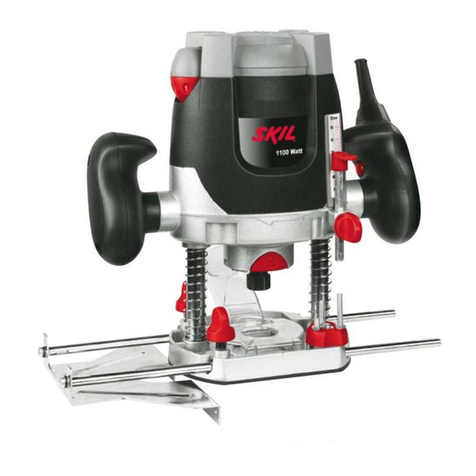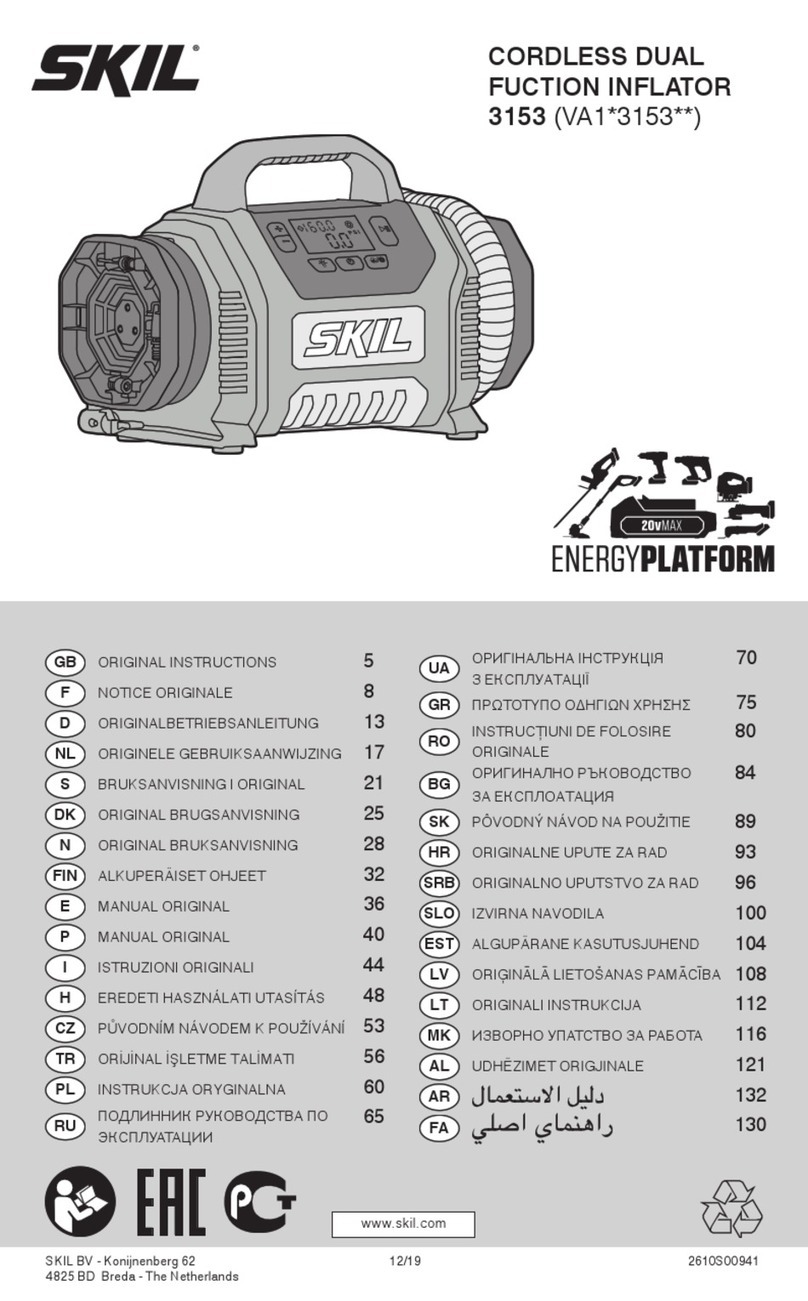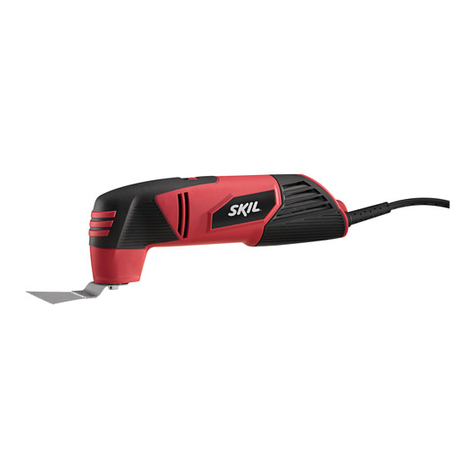-@@1>E4->31>
12;>1 A?5:3 .-@@1>E /4->31> >1-0 -88
5:?@>A/@5;:? -:0 /-A@5;:->E 9->75:3? ;:
.-@@1>E/4->31>.-@@1>E<-/7-:0
<>;0A/@A?5:3.-@@1>E
'?1 ;:8E @41 /4->31> C45/4 -//;9<-:510
E;A><>;0A/@;>05>1/@>1<8-/191:@-?
85?@105:@41/-@-8;3;>@45?9-:A-8 Do not
substitute any other charger. Use only Skil
approved chargers with your product. See
Functional Description and Specifications.
;:;@05?-??19.81/4->31>;>;<1>-@1@41
/4->31> 52 5@ 4-? >1/15B10 - ?4->< .8;C
.11:0>;<<10;>;@41>C5?10-9-3105:-:E
C-E$1<8-/10-9-310/;>0;><8A3?
599105-@18EIncorrect reassembly or damage
may result in electric shock or fire.
;:;@>1/4->31 .-@@1>E5:0-9< ;>C1@
1:B5>;:91:@;:;@1D<;?1/4->31>@;>-5:
;> ?:;C 2 .-@@1>E /-?1 5? />-/710 ;>
;@41>C5?10-9-3100;:;@5:?1>@5:@;
/4->31> Battery short or fire may result.
4->31 ;:8E %758 -<<>;B10 >1/4->31-.81
.-@@1>51? See Functional Description and
Specifications. Other types of batteries may
burst causing personal injury and damage.
4->31.-@@1>E<-/75:@19<1>-@A>1?-.;B1
013>11? 013>11? -:0 .18;C
013>11?013>11?%@;>1@;;8
-:0 .-@@1>E <-/7 5: 8;/-@5;:? C41>1
@19<1>-@A>1?C588:;@1D/110013>11?
013>11? This is important to prevent
serious damage to the battery cells.
-@@1>E 81-7-31 9-E ;//A> A:01> 1D@>191
A?-31 ;> @19<1>-@A>1 /;:05@5;:? B;50
/;:@-/@ C5@4 ?75: -:0 1E1? The battery
liquid is caustic and could cause chemical
burns to tissues. If liquid comes in contact with
skin, wash quickly with soap and water. If the
liquid contacts your eyes, flush them with
water for a minimum of 10 minutes and seek
medical attention.
-4-
;> <;?@? Should the bit become bound or
jammed in the work, the reaction torque of
the tool could crush your hand or leg.
2 @41 .5@ .1/;91? .;A:0 5: @41
C;>7<51/1 >181-?1 @41 @>5331>
599105-@18E >1B1>?1 @41 05>1/@5;: ;2
>;@-@5;:-:0?8;C8E?=A11F1@41@>5331>@;
.-/7 ;A@ @41 .5@ Be ready for a strong
reaction torque. The drill body will tend to
twist in the opposite direction as the drill bit is
rotating.
;:;@3>-?<@41@;;8;><8-/1E;A>4-:0?
@;; /8;?1 @; @41 ?<5::5:3 /4A/7 ;> 0>588
.5@Your hand may be lacerated.
)41: 5:?@-885:3 - .5@ 5:?1>@ @41 ?4-:7 ;2
@41 .5@ C188 C5@45: @41 /4A/7 If the bit is
not inserted deep enough, the grip of the
chuck over the bit is reduced and the loss of
control is increased. After bit insertion, pull
on bit to ensure it is locked.
; :;@ A?1 0A88 ;> 0-9-310 .5@? -:0
-//1??;>51? Dull or damaged bits have a
greater tendency to bind in the workpiece.
)41:>19;B5:3@41.5@2>;9@41@;;8-B;50
/;:@-/@ C5@4 ?75: -:0 A?1 <>;<1>
<>;@1/@5B1 38;B1? C41: 3>-?<5:3 @41 .5@
;>-//1??;>EAccessories may be hot after
prolonged use.
41/7 @; ?11 @4-@ 71E? -:0 -06A?@5:3
C>1:/41? ->1 >19;B10 2>;9 @41 0>588
.12;>1 ?C5@/45:3 @41 @;;8 "! Keys or
wrenches can fly away at high velocity
striking you or a bystander.
; :;@ >A: @41 0>588 C4581 /->>E5:3 5@ -@
E;A>?501A spinning drill bit could become
entangled with clothing and injury may result.
%;91 0A?@ />1-@10 .E
<;C1> ?-:05:3 ?-C5:3
3>5:05:3 0>5885:3 -:0 ;@41> /;:?@>A/@5;:
-/@5B5@51? /;:@-5:? /4195/-8? 7:;C: @;
/-A?1 /-:/1> .5>@4 0121/@? ;> ;@41>
>1<>;0A/@5B1 4->9 %;91 1D-9<81? ;2
@41?1/4195/-8?->1
• Lead from lead-based paints,
• Crystalline silica from bricks and cement
and other masonry products, and
• Arsenic and chromium from chemically-
treated lumber.
Your risk from these exposures varies,
depending on how often you do this type of
work. To reduce your exposure to these
chemicals: work in a well ventilated area, and
work with approved safety equipment, such
as those dust masks that are specially
designed to filter out microscopic particles.
!
ARNING
SM 1619X04215 05-09:SM 1619X04215 05-09 5/21/09 3:09 PM Page 4

